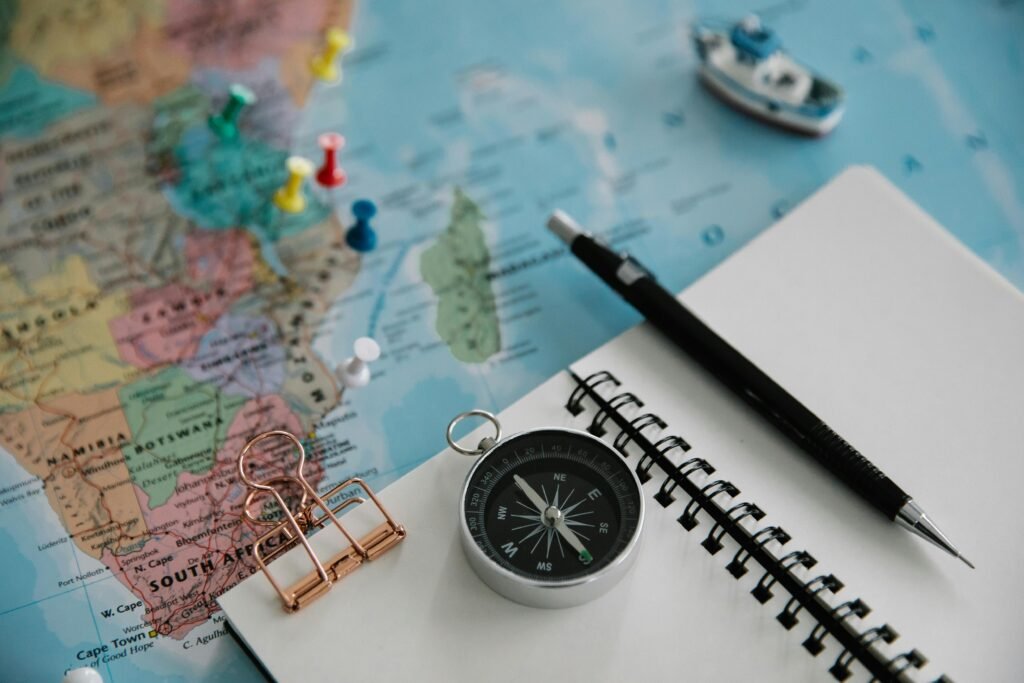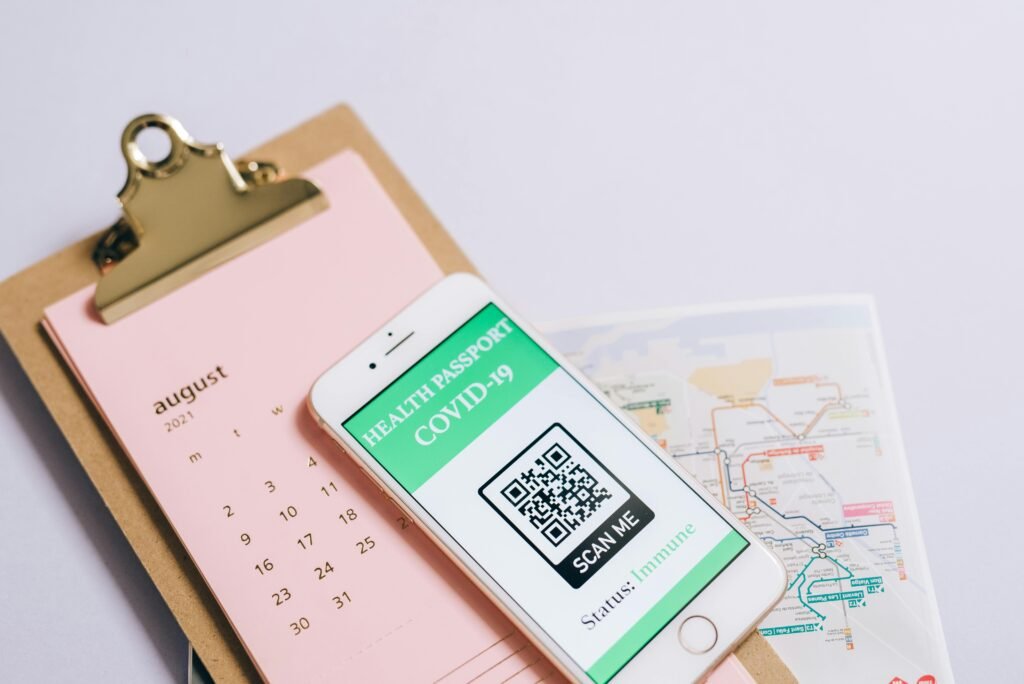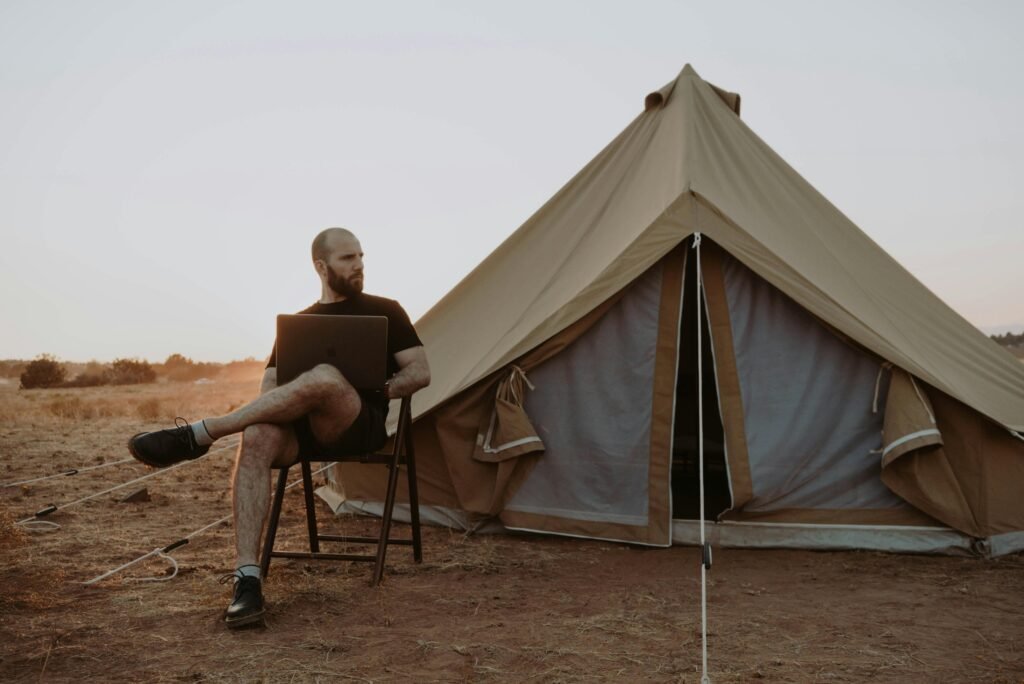Let’s be honest: grabbing a generic New York City itinerary off the internet is a surefire way to have a miserable trip. The best trip planner for NYC isn't some pre-canned checklist; it’s a plan built around you. This guide is all about helping you craft that perfect, personalized journey so your trip feels genuinely yours.
Why a Cookie-Cutter NYC Plan Is a Bad Idea
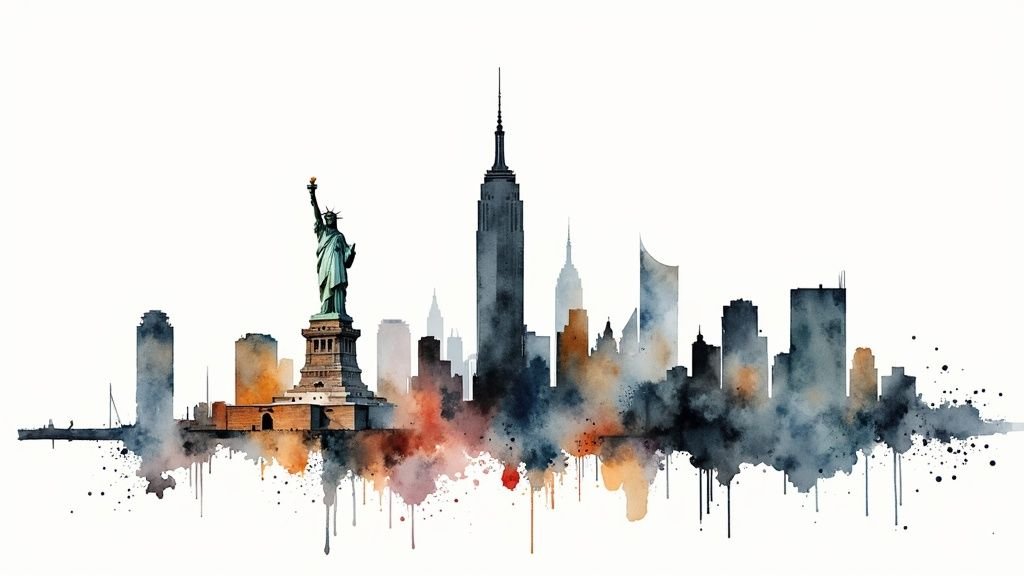
New York City is a massive, breathing beast of a place, and it moves to its own beat. Trying to follow a standard itinerary is like trying to force a square peg into a round hole—it just doesn't work. Most of those "must-do" lists create a frantic race to check boxes instead of letting you actually connect with the city.
Think about it. The classic tourist trail has you bouncing between boroughs like a pinball, wasting hours on the subway just to see the "top 10" sights. You might blow half a day getting from the Statue of Liberty to The Met, leaving you exhausted and shoulder-to-shoulder with thousands of other people. This approach completely ignores the city's geography and the unique vibe of each neighborhood.
The Problem with a One-Size-Fits-All Approach
A generic plan can't possibly know what you love. Are you a foodie who dreams of hidden culinary gems in Queens, or a history buff who wants to get lost in the cobblestone streets of the Financial District? A standard itinerary treats everyone the same, leaving you with a trip that feels hollow and impersonal.
The logistical headaches are a real trip-killer. Here’s what usually goes wrong:
- Wasted Time: Inefficient routes mean you spend more time staring at subway walls than soaking in the city.
- Crushing Crowds: Standard plans send everyone to the exact same places at the exact same peak times. No thanks.
- Missed Gems: You walk right past incredible local spots, quirky shops, and authentic experiences because they aren't on "the list."
- No Spontaneity: What if it rains? What if you stumble upon a cool street festival? A rigid plan leaves zero room for the magic of discovery.
And you're not alone. In 2023, New York City hosted a staggering 62.2 million visitors. That many people all trying to do the same thing is a recipe for disaster. A smart, personalized plan is your best defense against the crowds. If you're curious, you can dig into the full NYC tourism data in the NY State Comptroller's report.
The Smarter Way: Personalized Planning
A modern trip planner for NYC completely changes the game. Instead of you conforming to an itinerary, the itinerary is built around you. Picture a plan that clusters your activities by neighborhood, recommends restaurants based on food you actually like, and schedules in some breathing room so you don't burn out.
The real goal isn't just to see New York; it's to experience it in a way that feels right for you. It’s about swapping long lines at tourist traps for a quiet moment in a local coffee shop.
This is where technology, especially AI, really shines. It can take your interests, your preferred pace, and your budget and spin them into a plan that’s not just fun but also logical and efficient. You can learn more about the benefits of using an AI travel planner in our detailed guide, but the main takeaway is simple: it puts you first, making sure your NYC adventure is one you'll actually love.
Figuring Out Your Personal NYC Vibe
Before you even think about plugging destinations into a trip planner for NYC, you need to do a little soul-searching. Seriously. What does your perfect New York trip actually feel like? The answer is wildly different for everyone, and getting clear on your vision is what separates a good trip from an unforgettable one.
Are you picturing yourself on a foodie pilgrimage, hunting down Michelin-starred meals one night and the city's best pizza slice the next? Or are you a history buff, ready to walk the cobblestone streets of the Financial District and hear the immigrant stories at the Tenement Museum? Maybe you're an art fanatic who plans to get lost in The Met before diving into the contemporary gallery scene in Chelsea.
What Are Your "Must-Do" Moments?
Let's get specific. Forget the generic tourist trail for a second and think about what truly gets you excited. What does a perfect day in the city look like to you? Does it start with an early morning run through Central Park, or is it more of a sleep-in-and-find-a-boozy-brunch-in-SoHo kind of day?
If you're stuck, ask yourself a few questions to get the ball rolling:
- What do you love to do back home? If you're into live music, vintage shopping, or just hanging out in parks, NYC has a world-class version of it waiting for you.
- What’s your energy level? Are you a "go-go-go" traveler who wants to pack it all in, or do you prefer a relaxed vibe with room for spontaneous detours? There’s no wrong answer.
- What kind of atmosphere are you after? Do you want the electric, chaotic energy of Times Square, or the chill, artsy vibe of a Brooklyn neighborhood like Williamsburg?
Try to jot down a handful of "non-negotiable" experiences. This could be as grand as seeing a specific Broadway show or as simple as finding the absolute best cannoli in Little Italy.
The point here isn't to lock yourself into a rigid schedule. It's about creating a personal "mood board" of ideas. This is the raw material you'll feed the AI planner, making sure the itinerary it spits back actually reflects the trip you want to have.
Getting Real About Your NYC Budget
Okay, on to the less glamorous but absolutely essential part: money. New York can drain your wallet or be surprisingly affordable, but showing up without a financial game plan is a recipe for stress. Your budget is the framework for your travel style—it shapes everything from where you sleep to what you eat.
A luxury trip might mean five-star hotels in Midtown and tasting menus every night. On the flip side, a budget-conscious traveler could be staying in an outer-borough Airbnb, grabbing street food, and focusing on free must-dos like walking across the Brooklyn Bridge.
To get a handle on your spending, think about these main buckets:
- Accommodation: This will almost certainly be your biggest cost. Prices swing wildly depending on the neighborhood and time of year.
- Food & Drink: Are you planning for fine dining or dollar slices? Set a rough daily food budget to stay on track.
- Activities & Tickets: Don't forget to account for museum entry, observation deck tickets, shows, and tours.
- Transportation: For most visitors, a 7-day unlimited MetroCard is the most economical way to get around.
- Shopping & Souvenirs: Always a good idea to have a little extra set aside for that thing you just have to buy.
Knowing your budget helps the AI planner work its magic. When you tell it what you're willing to spend, it can find happy hour deals, point out free museum days, and suggest activities that won't break the bank. It's amazing how AI can adapt to different price points, which you can see in how AI travel planners tailor trips to every style. By nailing down your priorities and your budget first, you’re giving your planner the blueprint it needs to build your perfect trip.
Choosing the Right AI Trip Planner for NYC
With your travel style and budget mapped out, it's time to pick the right digital assistant to help you build your dream NYC itinerary. A modern trip planner for NYC is so much more than a map. Think of it as a smart travel partner, one that actually gets what you’re looking for—whether that's hidden art galleries in Chelsea, the best playgrounds for your kids in Central Park, or the perfect espresso in the West Village.
The real magic of these tools is how they take all your preferences and spin them into a smart, day-by-day schedule. Instead of just dropping pins on a map, a good AI planner will consider things like travel times between attractions, museum opening hours, and which sights make sense to see together. This transforms the often-daunting task of planning into a fun, creative process where you can really see your trip coming together.
Key Features to Look For in an AI Planner
Not all planners are built the same, and a city as dense and complex as New York really puts them to the test. A generic planner might get you from A to B, but the best ones have features specifically suited for big-city exploring.
Here’s what you should be looking for:
- Deep Personalization: The tool needs to dig deeper than just "food" or "museums." Can you tell it you love Impressionist art, want to find authentic dim sum in Chinatown, or are looking for a "quiet, cozy" vibe for your evenings? That’s the level of detail that makes a difference.
- Smart Route Optimization: This is a must-have for NYC. You need a planner that can cluster your activities by neighborhood to save you from zigzagging across the city. A great tool will know better than to schedule the Bronx Zoo right after your ferry ride to the Statue of Liberty.
- Real-Time Flexibility: Let's be honest, plans change. You might discover a street fair or decide to linger longer at a museum. The best AI planners let you drag and drop activities, easily add new stops, or ask for backup ideas on the fly. It should instantly recalculate your route without a fuss.
- Map and Transit Integration: Look for tools that play nicely with real-time transit data. Knowing the fastest subway line to get from your hotel in Brooklyn to a Broadway show is a game-changer.
The whole point is to find a system that does the heavy lifting, so you can focus on the excitement of discovering the city. For a closer look at the options out there, check out our guide to finding a great travel itinerary generator that fits your style.
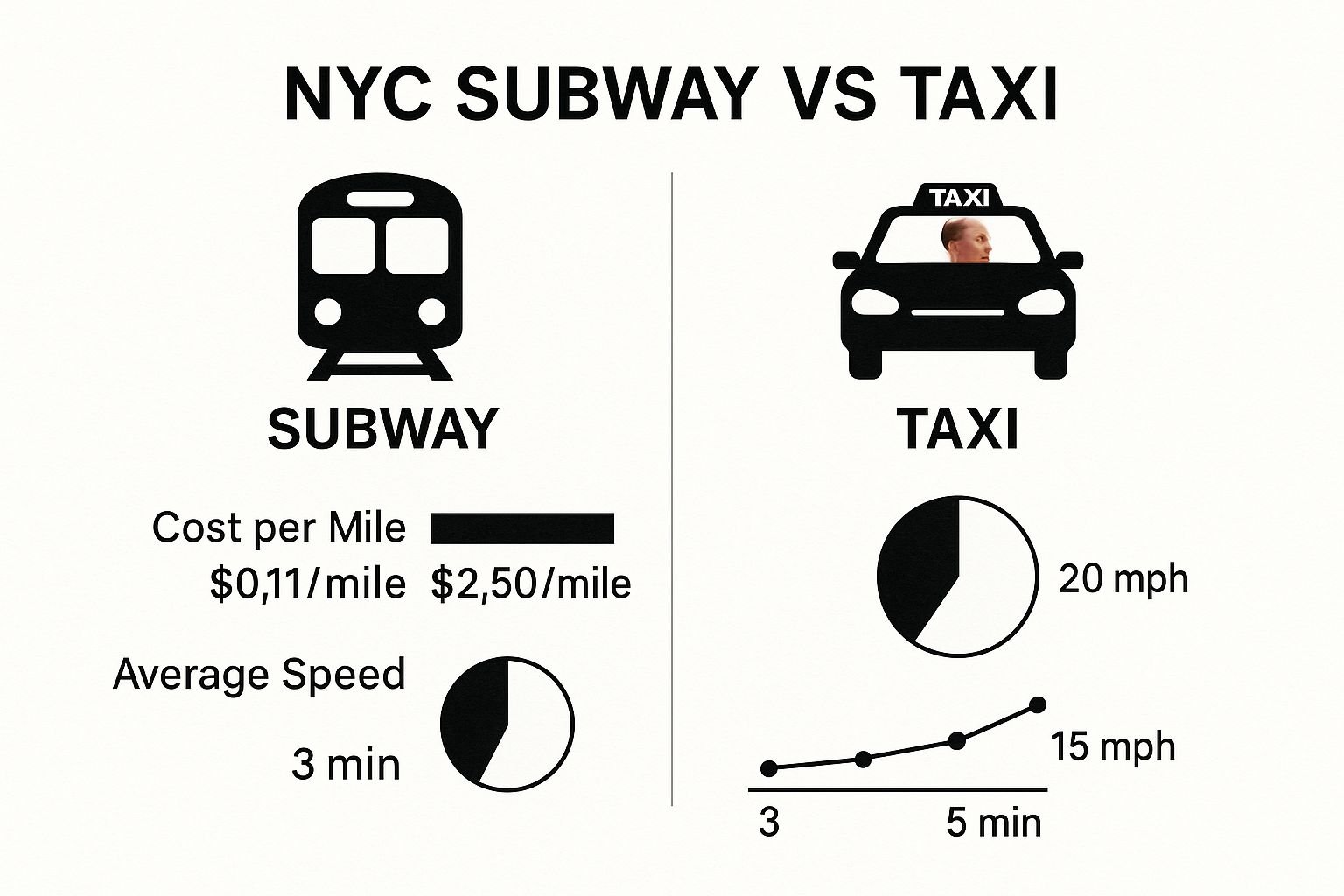
AI Trip Planner Feature Comparison
To help you choose the best tool for your NYC adventure, it's useful to see how different options stack up. While there are many great AI planners available, this table gives you a general idea of what to look for compared to just using a standard mapping tool.
| Feature | AI Planner A | AI Planner B | Traditional Google Maps |
|---|---|---|---|
| Personalization | High (based on interests, pace, budget) | Moderate (based on general categories) | Low (manual input required) |
| Route Optimization | Automatic, multi-day clustering | Automatic, single-day grouping | Manual, point-to-point only |
| Real-Time Updates | Yes, with live suggestions | Limited, manual refresh needed | Yes (for traffic/transit delays) |
| Activity Suggestions | Based on user profile and context | Based on popular attractions | Based on location/search query |
| Ease of Use | Conversational, prompt-based | Menu-driven, simple interface | Search-based, requires user planning |
Ultimately, the best choice depends on how much automated help you want. For a truly personalized and efficient trip, a dedicated AI planner often provides a much smoother experience than trying to piece everything together manually.
Crafting Effective Prompts for Your Itinerary
The quality of your AI-generated itinerary comes down to one thing: the quality of your input. If you give it vague instructions, you’ll get a generic, tourist-trap-filled plan in return.
You have to treat it like a conversation with an incredibly knowledgeable, but very literal, travel agent. "Plan a 3-day trip to NYC" just won't cut it.
Here's what a weak prompt looks like:
"I want to see museums and eat good food for three days."
This is way too broad. What museums? What kind of food? What's your budget? What's your pace? The AI has no choice but to give you the most obvious answers, like the Met and Times Square.
Now, let’s look at a strong, effective prompt:
"Create a 4-day NYC itinerary for a solo traveler who loves modern art, historical architecture, and jazz music. I'm staying in Greenwich Village and have a mid-range budget of about $200 per day for food and activities. I prefer a relaxed pace, with no more than 2-3 main activities per day. Please include a visit to the MoMA, a walking tour of the West Village, and suggestions for a jazz club. Also, find some highly-rated, casual spots for Italian food near my hotel."
See the difference? It's night and day. This detailed prompt gives the AI all the clues it needs to build a logical, interesting, and genuinely useful itinerary that feels like it was handcrafted just for you.
By taking a few extra minutes to write a thoughtful prompt, you give the AI the power to be the ultimate trip planner for NYC. You'll save yourself hours of manual research and end up with a trip that’s a perfect match for what you really want to do.
Building Your Itinerary with Smart Neighborhood Grouping

Okay, this is where the rubber meets the road. You’ve fed the AI your vision, and now it’s time to shape that into a real, day-by-day plan. The AI trip planner for NYC starts to work its magic here, but the secret sauce to a truly great trip is smart neighborhood grouping.
Honestly, the biggest mistake I see first-time visitors make is zig-zagging all over Manhattan. They'll try to hit the Statue of Liberty in the morning and The Met in the afternoon, wasting hours on the subway. The key is to conquer the city one neighborhood at a time. This simple strategy saves you a ton of travel time and energy, but more importantly, it lets you actually feel the vibe of each unique part of the city.
The Power of Thematic Days
I always tell people to think of each day as having its own theme based on a specific area. Your AI planner is actually pretty brilliant at this, and it will likely cluster your must-sees based on location automatically. This is a core principle for anyone learning https://thepeopletravels.com/how-to-make-a-travel-itinerary/ that won't fall apart on day one.
A well-planned trip might flow something like this:
- Midtown Marvels Day: Maybe you start your morning at the Museum of Modern Art (MoMA), take an afternoon stroll through the south end of Central Park, and then cap it off with a Broadway show you booked weeks ago. Everything is right there.
- Lower Manhattan History Day: You could spend the morning in the Financial District, absorb the history at the 9/11 Memorial & Museum, and then wander through the cast-iron buildings and boutiques of SoHo in the afternoon.
- Brooklyn Bridge & Beyond Day: A classic for a reason! Walk the iconic bridge from Manhattan, explore the stunning waterfront views in Dumbo, and then hop over to Williamsburg for dinner and a different perspective of that famous skyline.
See the logic? This flow is what makes an itinerary feel relaxed and fun, not like a frantic race against the clock.
Factoring in Travel and Downtime
Even with perfect neighborhood planning, you can't just teleport. A good AI planner will account for real-world travel, building in buffer time for walking or catching the subway. This is absolutely critical.
And you will be using the subway. It's the lifeblood of the city. Recent data shows just how essential it is, with ridership climbing 10.1% to an average of 3.7 million riders every single day. This trend is right in line with the city's tourism rebound, which has also seen Broadway attendance jump 14% year-over-year. You can dive deeper into NYC's economic and tourism trends in this detailed report, but the bottom line is that millions of people are on the move, and a smart plan is your best friend.
Your itinerary shouldn't be a rigid, minute-by-minute script. Think of it as a flexible framework. If the line for a museum is insane, your AI planner can instantly suggest a cool gallery or a hidden park nearby that you might love even more.
Strategically Placing Your Meal Breaks
Food isn't just fuel in New York; it’s a huge part of the experience. The classic mistake is to wait until you're starving and then wander into the first overpriced tourist trap you see. A smart trip planner for NYC helps you avoid this by weaving your meals right into the schedule.
Tell your planner to find great local spots near where you'll already be. For instance, if you're in Greenwich Village, ask it to find "the best slice of pizza within a 10-minute walk of Washington Square Park." This small step turns a simple lunch break into a memorable part of your trip.
Here's how I'd phrase those food prompts:
- Be Specific About Cuisine: Don't just say "lunch." Ask for "a quick and affordable spot for amazing tacos" or "a sit-down Italian restaurant with great reviews."
- Mention Vibe and Budget: Add color with details like "a quiet cafe for a coffee break" or "a lively spot for happy hour cocktails under $15."
- Tie it to Your Schedule: Frame the request around your activities, like, "After visiting the Tenement Museum, find a classic Jewish deli nearby."
Getting this detailed ensures your food experiences are just as curated as your sightseeing. When you combine this with smart neighborhood grouping and realistic travel times, your AI-generated plan becomes an incredible, personalized roadmap for your NYC adventure.
Finalizing Your NYC Bookings and Logistics
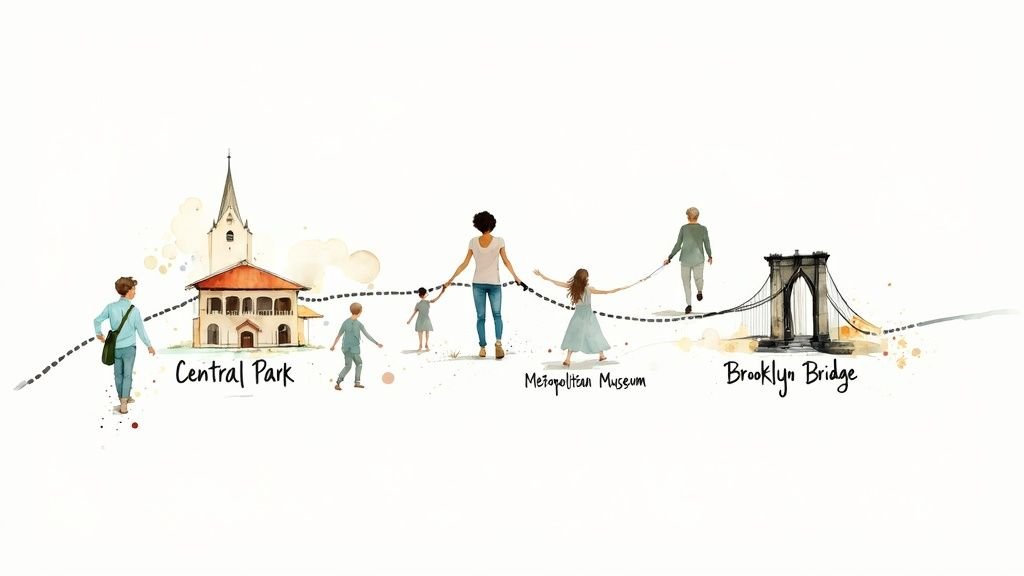
Alright, you've got a fantastic, neighborhood-by-neighborhood itinerary. Now comes the exciting part: making it real. This is where you shift from planning to doing, turning that digital blueprint into actual, confirmed reservations. Locking everything in is the final big push before you can sit back and just get excited for your trip.
First things first, let's talk about where you'll sleep. Your choice of accommodation can make or break your trip, seriously affecting both your budget and your daily travel time. While everyone immediately thinks of Manhattan, some of the smartest travelers I know look to the outer boroughs for amazing value.
Let your AI-powered itinerary be your guide. If it's packed with museums on the Upper East Side and shows in the Theater District, staying in Midtown makes perfect sense. But what if you're bouncing between Lower Manhattan and cool spots in Brooklyn? A hotel in Long Island City, Queens, could be a game-changer. You often get more space for your money, killer skyline views, and subway lines that will have you in Midtown in less than 15 minutes.
Strategic Lodging Choices
The hotel scene in New York City is always growing. Between 2005 and 2024, the number of hotel rooms exploded by 78%, jumping from 76,000 to a staggering 135,000. While most of those used to be in Manhattan, places like Brooklyn have seen a huge boom in new, stylish hotels, giving you more diverse—and often more affordable—options than ever before. You can dive deeper into the city’s dynamic tourism and hotel market in this comptroller's report.
Even with all those new rooms, NYC hotels still have the highest occupancy rates in the country. That's a fancy way of saying they fill up fast. So, booking your spot well in advance isn't just a good idea, it's pretty much essential.
Locking Down Tickets and Reservations
Once you've got your home base sorted, it's time to tackle the activities on your itinerary. I can't stress this enough: for many of the big attractions, just showing up and hoping to buy a ticket is a recipe for disaster. You'll either waste hours in line or, even worse, get turned away at the door.
Here's a quick rundown of what you should book ahead of time:
- Broadway Shows: For the best seats and prices, especially for the big-name shows, book your tickets at least a month or two out.
- Top Attractions: Always get timed-entry tickets online for places like the Empire State Building, Summit One Vanderbilt, and the 9/11 Memorial & Museum.
- High-Demand Restaurants: Did your planner suggest a must-try restaurant? Check if they're on Resy or OpenTable. The city's hottest tables can be booked solid for weeks.
- Special Tours: Niche walking tours or special guided experiences at museums have limited capacity and need to be booked early.
A rookie mistake is thinking you can just "wing it" for everything. In a city of millions, booking your can't-miss activities ahead of time is the secret to a smooth, enjoyable trip instead of a frustrating one.
Finally, with your flights, hotel, and key activities locked in, you should think about protecting your investment. Life happens, and sometimes trips get derailed by things you can't control. Before you go, it's smart to look into what is travel insurance coverage and see if a policy is right for your situation. It’s a simple safety net that covers you for cancellations, medical issues, and other bumps in the road, letting you focus on the fun part: the adventure ahead.
Got Questions About Your NYC Trip?
Planning a trip to a city like New York can feel like a huge puzzle, even with a great tool in your corner. You’re not alone if you have a few last-minute questions popping into your head—it’s a sign you’re thinking through the details, which is exactly what a seasoned traveler does.
Let's tackle some of the most common things people ask when planning their first, second, or even tenth trip to the Big Apple. Think of this as the final check-in before you go, making sure you feel confident and ready to hit the ground running.
What’s the Best Time of Year to Visit NYC?
Ah, the million-dollar question. Honestly, there's no single "best" time because each season in New York offers a completely different vibe. The right time to visit really boils down to what kind of experience you're after.
- Fall (September – November): Most locals and seasoned travelers will tell you this is prime time. The air is crisp, the humidity is gone, and the fall colors in Central Park are just spectacular. It's the perfect weather for walking for hours on end.
- Spring (April – June): This is a close second. The city comes alive after the winter slumber, with flowers blooming and an infectious energy in the air. It’s another sweet spot for comfortable sightseeing weather.
- Holiday Season (Late November – December): Want that movie-magic, festive feeling? This is it. The lights, the window displays, the holiday markets—it's pure magic. Just be ready for the biggest crowds and highest prices of the entire year.
- Winter (January – March): If you're on a tight budget and don't mind bundling up, this is your season. You’ll score the best deals on flights and hotels and get to see major attractions without the usual sea of people.
How Many Days Do I Really Need for a First Trip?
For your first real taste of New York, aim for five to seven days. That's the sweet spot. It gives you enough breathing room to hit the big-ticket items like the Empire State Building, Times Square, and the Statue of Liberty without sprinting from place to place.
A full week also means you can dedicate a day to exploring a different borough (hello, Brooklyn!), wander through a couple of museums at a relaxed pace, and still have an evening left for that Broadway show you've been dreaming of. A 3-4 day weekend is doable, but you'll have to be ruthless with your list and rely heavily on your AI planner to make every minute count.
The number one mistake first-timers make? Trying to do too much. New York is enormous, and just getting from one neighborhood to another is part of the experience. You have to build in time for just… being there.
Is an AI Planner Better Than Just Using Google Maps?
Look, you can absolutely map out a trip using Google Maps, but it's a completely different tool for a different job. Google Maps is a master of getting you from Point A to Point B right now. An AI trip planner is your strategist for the entire trip.
Where an AI planner really shines is in building a logical, day-by-day flow. It groups sights by neighborhood so you’re not wasting two hours on the subway crisscrossing the city. It unearths cool restaurants and hidden gems based on your tastes, not just what's popular. And if your ferry gets canceled or you decide to linger longer at a museum, it can recalibrate your whole day instantly. It handles the logistical headache so you can focus on the fun.
What Common Mistakes Should I Avoid When Planning?
Aside from the classic over-scheduling, a couple of rookie mistakes can throw a wrench in your plans. The biggest one is waiting until you land to book things. Tickets for popular attractions, Broadway shows, and sought-after dinner reservations get snapped up weeks, sometimes months, in advance.
Another classic blunder is staying glued to Midtown Manhattan. Yes, it has the famous landmarks, but the real character of the city lives in its neighborhoods. Carve out time to explore places like Greenwich Village, the Lower East Side, or hop over to Brooklyn Heights or Williamsburg. That’s where you’ll find the authentic, and often more affordable, New York experience.
Ready to build your own perfectly crafted NYC itinerary without the stress? The People Travels uses smart AI to design a personalized, day-by-day plan that matches your travel style, budget, and interests. Start planning your unforgettable trip today!

